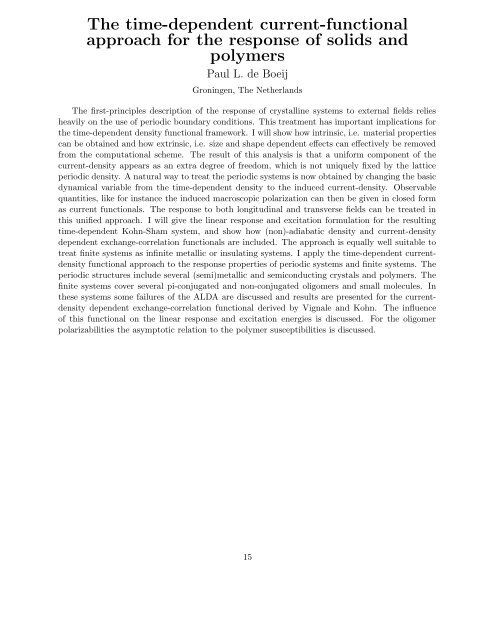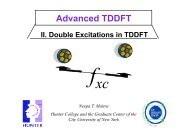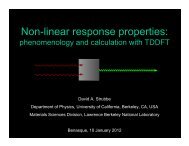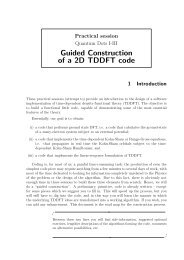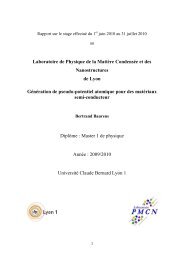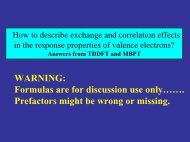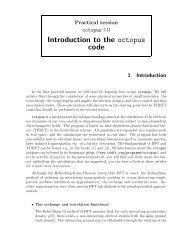TIME DEPENDENT DENSITY FUNCTIONAL THEORY ... - TDDFT.org
TIME DEPENDENT DENSITY FUNCTIONAL THEORY ... - TDDFT.org
TIME DEPENDENT DENSITY FUNCTIONAL THEORY ... - TDDFT.org
- No tags were found...
You also want an ePaper? Increase the reach of your titles
YUMPU automatically turns print PDFs into web optimized ePapers that Google loves.
The time-dependent current-functional<br />
approach for the response of solids and<br />
polymers<br />
Paul L. de Boeij<br />
Groningen, The Netherlands<br />
The first-principles description of the response of crystalline systems to external fields relies<br />
heavily on the use of periodic boundary conditions. This treatment has important implications for<br />
the time-dependent density functional framework. I will show how intrinsic, i.e. material properties<br />
can be obtained and how extrinsic, i.e. size and shape dependent effects can effectively be removed<br />
from the computational scheme. The result of this analysis is that a uniform component of the<br />
current-density appears as an extra degree of freedom, which is not uniquely fixed by the lattice<br />
periodic density. A natural way to treat the periodic systems is now obtained by changing the basic<br />
dynamical variable from the time-dependent density to the induced current-density. Observable<br />
quantities, like for instance the induced macroscopic polarization can then be given in closed form<br />
as current functionals. The response to both longitudinal and transverse fields can be treated in<br />
this unified approach. I will give the linear response and excitation formulation for the resulting<br />
time-dependent Kohn-Sham system, and show how (non)-adiabatic density and current-density<br />
dependent exchange-correlation functionals are included. The approach is equally well suitable to<br />
treat finite systems as infinite metallic or insulating systems. I apply the time-dependent currentdensity<br />
functional approach to the response properties of periodic systems and finite systems. The<br />
periodic structures include several (semi)metallic and semiconducting crystals and polymers. The<br />
finite systems cover several pi-conjugated and non-conjugated oligomers and small molecules. In<br />
these systems some failures of the ALDA are discussed and results are presented for the currentdensity<br />
dependent exchange-correlation functional derived by Vignale and Kohn. The influence<br />
of this functional on the linear response and excitation energies is discussed. For the oligomer<br />
polarizabilities the asymptotic relation to the polymer susceptibilities is discussed.<br />
15


